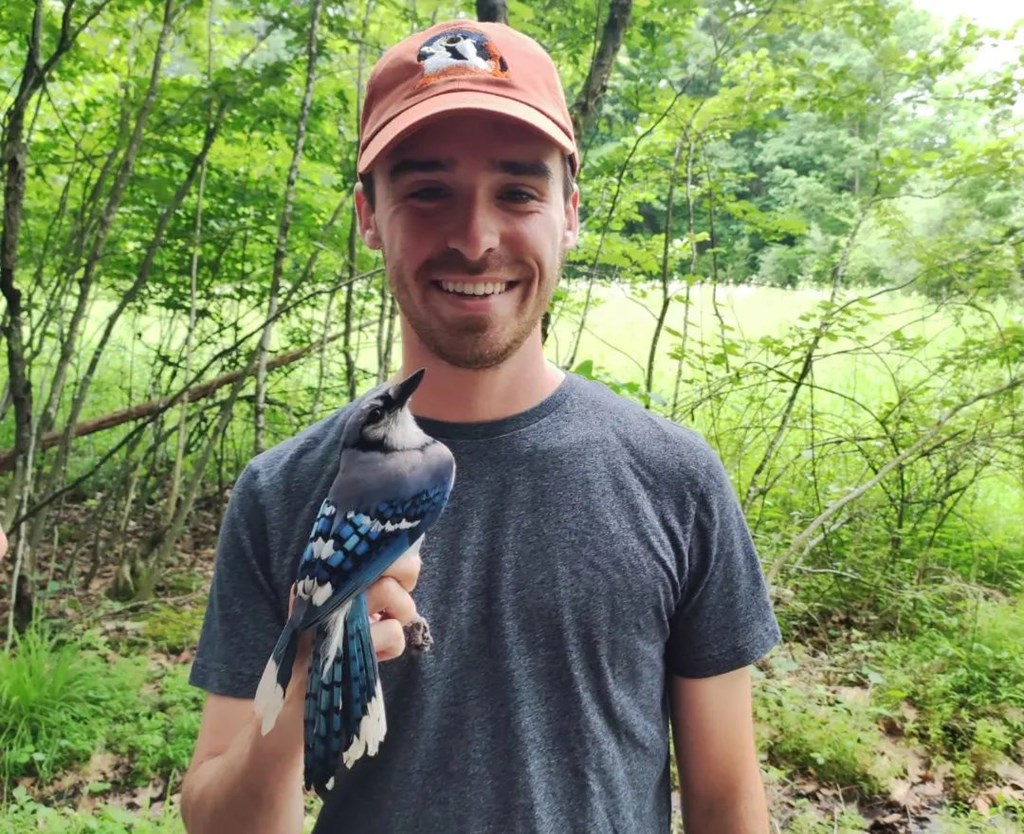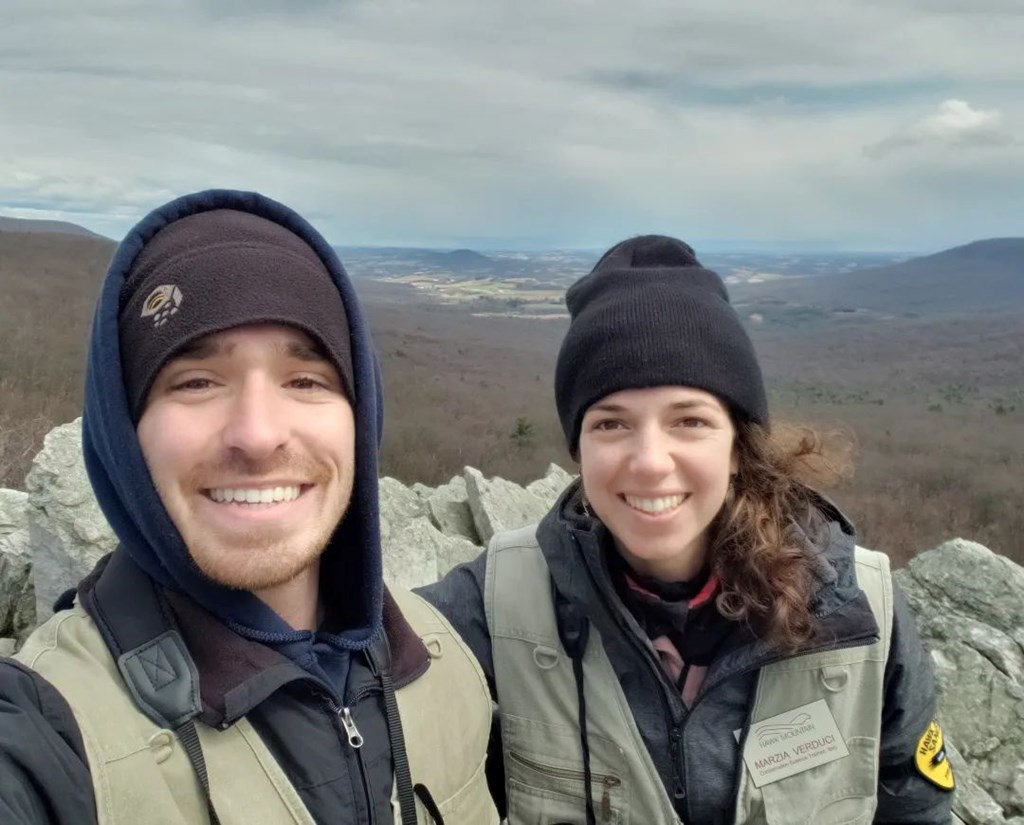Discovering My Wings at Hawk Mountain
Posted on in On the Mountain by Matt Bowers, 2022 Conservation Science Trainee

Growing up, I was regularly exposed to nature. My experiences playing in the woods behind my house, traveling to beautiful destinations with my parents, and becoming an Eagle Scout shaped my desire to pursue a career in the natural sciences. This, along with my love for animals, led me to study wildlife science at Penn State University. As a senior there, looking for post-graduation jobs, I was applying to dozens of field technician positions. Afterall, I wanted to gain research experience before eventually pursuing a graduate degree. Almost all these positions focused on mammals, which have fascinated me since childhood. I would awe over the charismatic mammal species shown on TV. From then on, I was dedicated to studying and conserving these animals for the rest of my life, and I still am. However, there was one job opening that changed my path as an emerging wildlife scientist.
My academic advisor would regularly send job openings to students within my major, and most times I would quickly skim through and discard them if they weren’t related to mammals. But one email had the title “Field Assistant Hire - Hawk Mountain Sanctuary,” and it caught my attention. As someone who was born and raised just outside of Reading, PA, I was familiar with Hawk Mountain and had visited a few times. The job description was for an American kestrel research technician to monitor nests and collect data from chicks in the State College, PA area. Logistically, this job seemed perfect, as I would be able to keep my current apartment in State College. However, I didn’t care much for birds. In fact, I didn’t even know what a kestrel was until I took an ornithology class my junior year! Alas, I applied for the position but still preferred to get one of the flashier mammal jobs. Unbeknownst to me at the time, wildlife technician positions are extremely competitive. Despite my hardest efforts I only got an interview for one job – the kestrel position through Hawk Mountain Sanctuary. The interview went well, and I ended up getting a job offer! Little did I know that this would be such a fun and rewarding experience.
Throughout the spring and summer of 2021, my life was dedicated to kestrels. I was checking boxes, feeding chicks for a supplemental feeding study, doing habitat and mammal track surveys, measuring chicks, collecting blood samples, and attaching transmitters that I used to track fledglings. I quickly came to love those little fluffballs and felt like a proud father as I watched them develop into fierce, fast-flying predators in just a few short weeks. The principal investigator of the study I was participating in, Dr. Allison Cornell from Penn State Altoona, was a huge inspiration and a supportive teacher as I learned all these field techniques from her. By the end of August, I didn’t want the job to end. Was I becoming a birder?

A few months later, after taking classes for a certificate in the fall, I was once again looking for field technician positions. Dr. JF Therrien, who was my Hawk Mountain advisor and liaison over the summer, encouraged me to apply to Hawk Mountain’s spring trainee position. Now, as I approach the end of the traineeship, I can’t thank JF enough for his support. As a trainee, I have enjoyed partaking in the spring migration count, where I was lucky enough to witness the peak day of 366 raptors! Interacting with the public and leading weekend education programs has been rewarding and relevant, as I believe outreach is a critical component of wildlife research and conservation. Additionally, living with other trainees from around the world has been so much fun. We are one big family.
Lately, my life is once again dedicated to the kestrels. I am primarily observing behavior at occupied nest boxes. We are playing Cooper’s hawk calls alongside a taxidermied Cooper’s hawk to see if the presence of a predator on a regular basis impacts parental behavior or even the success of the nest. I am also excited to be working with another trainee, Pauli, on writing and hopefully publishing a paper regarding Hawk Mountain’s historic kestrel database. We spent a month tediously organizing the database, and we’re now analyzing the data and starting the writing process. This is extremely important for me, as I am gaining analytical, statistical, and science-writing skills that will better prepare me for grad school. Starting this fall, I will be pursuing a master’s degree in biology from Western Kentucky University, where I will be studying the effects of climate-smart agriculture on human-elephant conflicts in Kenya. I am beyond ecstatic for this next chapter of my life, especially since this research encompasses my interests of climate change, human-wildlife conflicts, and immersing myself in other cultures! Looking beyond graduate school, I am open to many possibilities. I’ll be happy as long as I am actively conserving wildlife and helping to give nature a voice.
It is safe to say that Hawk Mountain Sanctuary has helped me “discover my wings”. These days, when I walk through the woods, I’m searching for songbirds and learning their calls. When I’m driving, I’ll peek at the sky to identify the raptors soaring above me. I’m already considering possible side-projects in collaboration with Hawk Mountain. I have become a birder, and I couldn’t be happier.